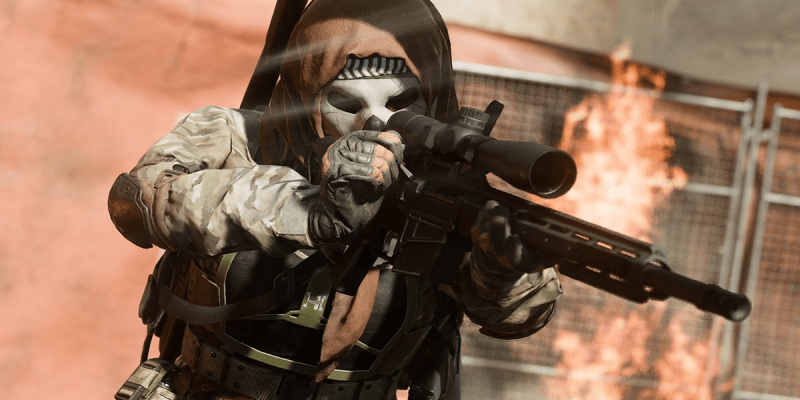Call of Duty: Modern Warfare 3 (CoD: MW3) has a lot of fast-paced FPS action, so it’s important to strike a good balance between visuals and performance to keep your edge in Multiplayer, and in this guide we’ll be covering the best settings to use in the game.
Best Graphics Settings in Call of Duty Modern Warfare 3 (MW3)
Display Settings
There are only a couple of important settings to check under Display but they can also be quite impactful.
- Display Mode – Fullscreen Exclusive is the best option to use for optimal performance as well as the best graphical quality. You won’t be able to tab out of the game as easily, but it’s well worth the trade off.
- V-Sync – You should enable this option for the menus to stop your framerate running wild. As for the gameplay, well that depends on your setup. If you have a G-Sync or Adaptive-Sync monitor and a modern enough graphics card to take advantage of the capability, I would choose to disable V-Sync. Instead use the Custom Framerate option below it to set the FPS cap manually to the refresh rate of your monitor. This will give you the smoothest experience without the input delay of V-Sync.
Related: Does the Season 6 Battle Pass Carry Over to Call of Duty: Modern Warfare 3? (MW3)
Quality Settings
Here’s where you’ll find the bulk of settings to adjust for best performance while still maintaining quality.
- Render Resolution – Ensure this is set to 100% to match your monitors native display resolution.
- Dynamic Resolution – Turn this off or it will cause a very choppy gameplay experience.
- Upscaling / Sharpening – Upscaling / Sharpening can be set to the option matching your graphics card manufacturer. I.e. Nvidia DLSS or AMD FSR. These will intelligently upscale from a lower resolution to add a huge boost in performance at the cost of a slight downgrade in visuals. This will be worth turning on for most players. If you want the best graphical quality though leave it off.
- VRAM Scale Target – Leave this set at 80. Messing with it can cause your game to crash.
- Variable Rate Shading – Improves performance for a small visual cost, worth enabling.
- Texture Resolution – Set this to whatever your CPU and GPU can handle, it’s quite taxing on both. Normal is a good sweet spot for most.
- Texture Filter Anisotropic – Improves the Texture quality of surfaces. Normal – High should be the choice here.
- Depth of Field – Blurs your surroundings when scoped in. This one is personal preference.
- Detail Quality Level – Low impact setting that makes the rocks and flowers look nice. Can be set at High with minimal impact.
- Particle Resolution – Effects like grenades and explosions look better the high this setting. It’s relatively taxing on the GPU so Normal will be about right for most players.
- Bullet Impacts – Low impact, can leave it on.
- Persistent Effects – This one takes up some GPU memory and can be turned off if you want a little performance boost.
- Shader Quality – Makes the surface lighting look good. Go Medium – High for this one.
- On-Demand Texture Streaming – This setting uses your internet to stream in some of the textures to provide extra texture detail. Highly recommend turning off this setting to avoid lag.
- Local Texture Streaming Quality – This affects the distance of textures on larger maps. You can set this to Low to gain some performance without really impacting visuals.
- Shadow Quality – Shadows take a good amount of CPU and GPU. Set this to Normal – High at the most.
- Screen Space Shadows – Just makes the shadows on your guns look better. Set to Low.
- Ambient Occlusion – Adds soft shadows to objects. GTAO is the best stetting to use here.
- Screen Space Reflections – Changes the reflective quality of water and glass. Low impact so Normal – High is good here.
- Static Reflection Quality – Changes reflective quality of mirrors. Takes GPU ram for little graphical improvement, set to Low.
- Tessellation – Improves rendering quality but takes CPU and GPU resources. Set to off or Near.
- Terrain Memory – Sets the memory allocated to distant terrain. Set at Min – Medium.
- Volumetric Quality – Lighting, Clouds and Fog quality. Set to Low – Medium as it uses quite a lot of resources from the CPU and GPU.
- Deferred Physics Quality – Just changes the physics quality of the water. Set to Off or Low to save resources.
- Weather Grid Volumes – Set this to Normal.
- Water Quality – Not really important on most maps. You could set this to Off to save some resources.
Those are all the main settings to consider changing in MW3 for the best graphics – performance ratio. Following this guide will ensure you’ve got your game nice and optimized for whichever content you’re taking on in MW3!
If you’re looking for more after choosing those best graphics settings, check out our article on all the maps in MW3.
